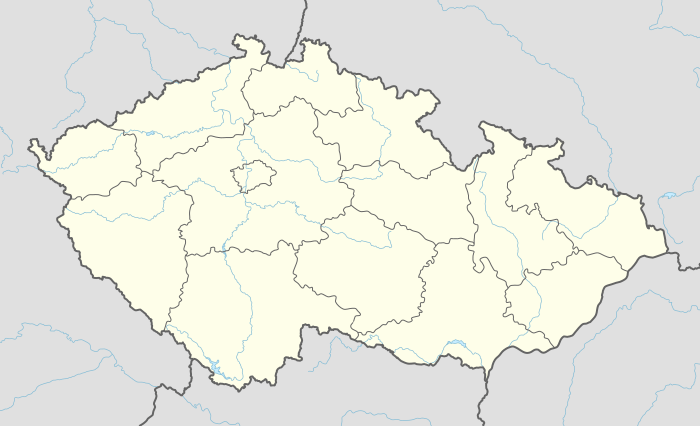Mikulčice
Mikulčice (Czech pronunciation: [ˈmi.kul.tʃi.tsɛ]) is a municipality (obec) in the Czech Republic, situated 7 km south of Hodonín, nearby the Slovak border. It extends for 1,530 ha, comprising 1,955 inhabitants in 623 homes, and a biospheric reserve, containing beavers and storks. The local economy is predominantly based on agriculture and tourism.
Mikulčice | |
|---|---|
Village | |
Church of the Assumption in Mikulčice | |
 Flag  Coat of arms | |
 Mikulčice Location in the Czech Republic | |
| Coordinates: 48°49′N 17°03′E | |
| Country | Czech Republic |
| Region | South Moravian |
| District | Hodonín |
| First mention | 1131 |
| Government | |
| • Mayor | Marta Otáhalová |
| Area | |
| • Total | 15.30 km2 (5.91 sq mi) |
| Elevation | 165 m (541 ft) |
| Population (2019-01-01) | |
| • Total | 1,962 |
| • Density | 130/km2 (330/sq mi) |
| Time zone | UTC+1 (CET) |
| • Summer (DST) | UTC+2 (CEST) |
| Postal code | 696 19 |
| Website | www.mikulcice.cz |
History
From the sixth until the tenth century, a Slavic fortified settlement existed 3 km away from the modern village. The settlement was one of the main centres of the Great Moravian Empire, plausibly its capital city. Excavations, led by Josef Poulík, unearthed the remnants of twelve churches, a palace, and more than 2,500 graves (three containing African skeletons) (including a horse burial[1]). The only still-standing church safely dated to the Great Moravian period is found in the nearby Slovak village of Kopčany just across the Morava river. The excavation complex is nationally recognised as the Mikulčice-Valy or Mikulčice Archaeopark heritage site.
The oldest written reference to the village itself dates to 1131, when the village was referred to as Miculcici in Medieval Latin. Both the Czech Mikulčice and the Latin Miculcici are nouns which exist only in the plural form, like the Netherlands. Mikulčice meaning simply "the people of Mikul (dialectal form of Nicholas)".
Statistical divisions
- Mikulčice (303 homes, 918 inhabitants)
- Těšice (320 homes, 988 inhabitants)
References
- Berend, Nóra (2007). Christianization and the Rise of Christian Monarchy: Scandinavia, Central Europe and Rus' C. 900-1200. Cambridge UP. pp. 216, 321. ISBN 9780521876162. Retrieved 25 June 2012.
External links
| Wikimedia Commons has media related to Mikulčice. |
- Polacek, Lumir. Ninth-century Mikulcice: The «market of the Moravians»? The archaeological evidence of trade in Great Moravia // Post-Roman towns, trade and settlement in Europe and Byzantium. Vol. 1. The heirs of the Roman West / Ed. by Joachim Henning. Berlin: Walter de Gruyter, 2007. P. 499–524.
- Official website of Mikulčice (in Czech)
- Mikulčice-Valy Heritage Site (in Czech)
- Census information about the municipality (in Czech)